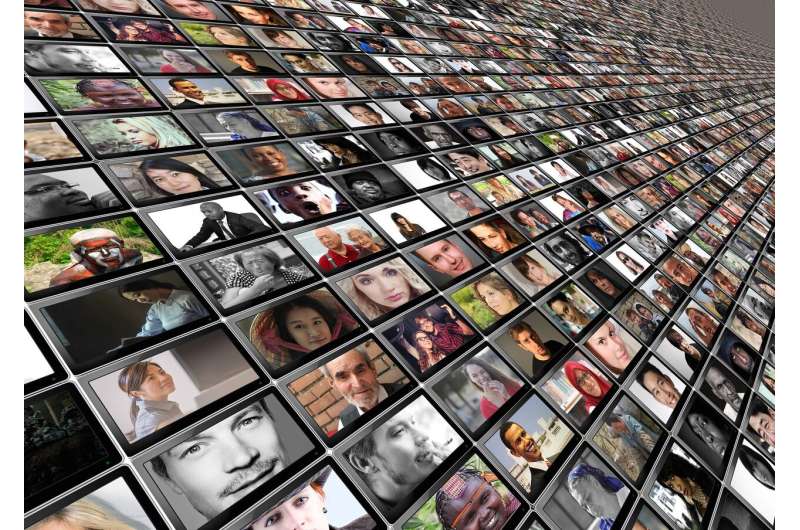Across 50 countries, female faces consistently rank higher in attractiveness than male faces
Justin Jackson
сontributing writer

Sadie Harley
scientific editor

Robert Egan
associate editor

Research led by the Max Planck Institute for Empirical Aesthetics has confirmed that female faces are rated as more attractive than male faces across diverse cultures, ethnicities, and regardless of the rater's gender—a pattern that had been widely theorized but never empirically confirmed.
Darwin noted more than 150 years ago that, unlike in most species where males evolve ornate traits to attract females with bright plumage, complex courtship rituals, and bold coloration, humans seem to reverse that pattern. Women are typically regarded as the "beautiful sex."
Darwin's observation spurred generations of evolutionary theorists to ask why sexual selection in humans would favor female visual traits. Biologists and psychologists have long debated whether this phenomenon reflects evolved aesthetic preferences, cultural norms, or biased assumptions. For all the theoretical attention it has gotten, the gender asymmetry in perceived attractiveness had never been systematically quantified on a global scale.
In the study, "The Gender Attractiveness Gap," on the pre-print server bioRxiv, researchers conducted a cross-cultural meta-analysis to determine whether facial attractiveness ratings differ by gender and whether those differences hold across rater sex, cultural background, and facial ethnicity.
Data were drawn from 28 studies conducted in over 50 countries, comprising facial evaluations from 12,671 raters and 11,191 facial images spanning six ethnic categories.
All images depicted front-facing human faces with neutral expressions, shown without adornments or contextual cues. Gender in the datasets was binary by design, both for raters and portrayed individuals. Ratings of male and female faces were available in both same-sex and opposite-sex configurations.
Facial stimuli were z-standardized, and multilevel models were used to estimate the effect of target gender, rater gender, and their interaction on perceived attractiveness. Additional models tested whether the gender effect varied by the rater's cultural region or the ethnicity of the portrayed face.
A subset of the data containing morphometric information enabled further testing of sexual shape dimorphism as a mediating factor. Facial averageness and age were statistically controlled in those models to isolate the role of structural femininity and masculinity.
Female faces received significantly higher attractiveness ratings than male faces, an effect size that the authors describe as medium to large. That difference held across both same-sex and opposite-sex evaluations.
Female raters produced a larger disparity between ratings of male and female faces than male raters did. Male raters tended to give lower attractiveness scores overall, regardless of the gender of the face.
Patterns also varied by region and ethnicity. Most cultural groups showed the same female-favoring gap. Yet among Sub-Saharan African raters, no significant differences appeared. A similar absence was observed in ratings of African faces, suggesting a cultural or representational divergence not found in other ethnic categories.
Structural features of the face explained most of the attractiveness gap. Faces with more feminine geometry received higher ratings, and controlling for this facial dimorphism substantially reduced the difference between male and female faces. Yet the effect was asymmetric.
Adjusting for structure reduced ratings of female faces but left ratings of male faces largely unchanged. That imbalance suggests that both male and female raters placed greater aesthetic value on femininity than on masculinity.
Judgments based on same-sex and opposite-sex images appeared to rely on different evaluative processes. Among female raters, facial ratings showed weaker alignment with heterosexual attraction, suggesting a more complex interplay of aesthetic and social cues.
Findings complicate evolutionary models that attribute attractiveness judgments solely to reproductive strategies. Results instead point to gendered norms and peer perception effects, especially among women, as contributors to the observed gap.
According to the authors, this bias may reflect both internalized cultural aesthetics and greater attentiveness to appearance among women, shaped by lifelong exposure to beauty standards.
Written for you by our author , edited by , and fact-checked and reviewed by —this article is the result of careful human work. We rely on readers like you to keep independent science journalism alive. If this reporting matters to you, please consider a (especially monthly). You'll get an ad-free account as a thank-you.
More information: Eugen Wassiliwizky et al, The Gender Attractiveness Gap, bioRxiv (2025).
Journal information: bioRxiv
© 2025 Science X Network

















